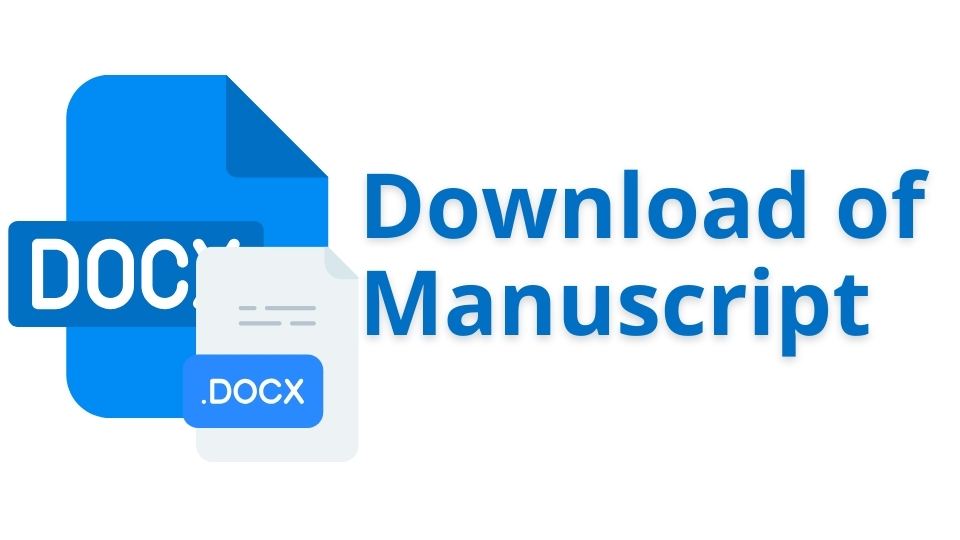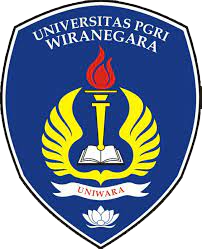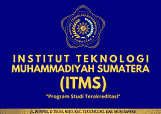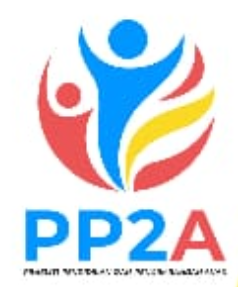Problems of Investment Literacy and Utilization of Security Crowdfunding in Digital Age Through the Islamic Capital Market
Authors
Keywords:
Digital Age, Investment Literacy, Investments, Islamic Capital , Literature Review, Market, Security Crowdfunding, Sharia-compliant , SystematicAbstract
This study investigates the critical issues of investment literacy and the utilization of security crowdfunding within the Islamic capital market in the digital age. By conducting a systematic literature review (SLR), we aim to understand how investment knowledge impacts the effectiveness of Sharia-compliant security crowdfunding platforms. The review includes studies from various regions focusing on individual investors engaged in Islamic capital markets. Our findings indicate a significant gap in investment literacy among potential investors. Many lack a basic understanding of financial principles, risk management, and the specifics of Sharia-compliant investments. This deficiency hampers the effective use of security crowdfunding platforms. Additionally, the increasing reliance on digital platforms for investment activities highlights the need for targeted educational programs and stronger regulatory frameworks. To address these challenges, we recommend developing comprehensive educational initiatives focused on Islamic finance principles. Additionally, we suggest enhancing regulatory support to foster more informed and inclusive participation in the Islamic financial ecosystem. Future research should also explore specific demographic factors affecting investment literacy and the effectiveness of different educational programs.
Downloads
References
Abdullah, A., Hassan, R., & Kassim, S. (2020). A real asset management approach for Islamic investment in containerships. Journal of Islamic Accounting and Business Research, 11(1), 27 – 48. https://doi.org/10.1108/JIABR-07-2017-0105
Adam, M., & Muizzuddin, M. (2020). Banking governance: Perspective of islamic banking. In Growth and Emerging Prospects of International Islamic Banking. IGI Global. https://doi.org/10.4018/978-1-7998-1611-9.ch014
Agustin, F. W., & Mahmud, I. (2024). Modernization of Religious Practices: Challenges and Opportunities in the Technological Era. JPCIS: Journal of Pergunu and Contemporary Islamic Studies, 1(1).
Agustin, F. W., Sunaryo, H., & Suharto, M. (2024). Pengaruh Karakteristik Individu, Komunikasi, Dan Kerjasama Tim Terhadap Kinerja Pegawai. E-JRM: Elektronik Jurnal Riset Manajemen, 13(1), 3658–3667.
Aji, F. B., Nurmalitasari, D., Lestari, A. S. B., & Muhammad, I. (2023). Comedian Mathematical Thinking: An Islamic Examination of Inductive, Deductive, and Analogy Approaches in the Creation of Stand-Up Comedy Material. Assyfa Journal of Islamic Studies, 1, 24–30.
Al-Harbi, A. (2020). Determinates of Islamic banks liquidity. Journal of Islamic Accounting and Business Research, 11(8), 1619 – 1632. https://doi.org/10.1108/JIABR-08-2016-0096
Al-Hunnayan, S. H. (2020). The capital structure decisions of Islamic banks in the GCC. Journal of Islamic Accounting and Business Research, 11(3), 745 – 764. https://doi.org/10.1108/JIABR-02-2017-0026
Alam, M., & Ansari, V. A. (2020). Are Islamic indices a viable investment avenue? An empirical study of Islamic and conventional indices in India. International Journal of Islamic and Middle Eastern Finance and Management, 13(3), 503 – 518. https://doi.org/10.1108/IMEFM-03-2019-0121
Amany, D. A. L., Puteri, A. A. I., & Karim, S. (2023). Analysis of The Relationship Between Student Interest and Written Communication in Solving Realistic Mathematics Problems. Delta-Phi: Jurnal Pendidikan Matematika, 1, 15–19.
Anagnostopoulos, I., Noikokyris, E., & Giannopoulos, G. (2020). A meta-crisis banking efficiency study in the MENA region. Journal of Islamic Accounting and Business Research, 11(9), 2087 – 2112. https://doi.org/10.1108/JIABR-12-2019-0235
Ariansyah, F., Ramadhani, D. D., Agustin, F. W., Fauziyah, E. P., & Amelia, N. D. (2024). The Use of Deep Learning to Improve Teaching and Learning in Islamic Schools. JPCIS: Journal of Pergunu and Contemporary Islamic Studies, 1.
Arifin, Z., & Mulyati, S. (2020). Prediction model for the persistence of Sharia Mutual fund performance in Indonesian capital market. International Journal of Business and Society, 21(3), 1033 – 1044. https://www.scopus.com/inward/record.uri?eid=2-s2.0-85097963784&partnerID=40&md5=09f718676657dc239f86d3327fa81df0
Arma, I. P., Mas’odi, M., & Arma, I. P. (2024). Characters and Non-Digital Media: Case Study Trends in English Language Learning in Secondary Schools. Assyfa Journal of Multidisciplinary Education, 2, 95–103.
Asrofi, A., Masodi, M., Santoso, C. R., Agustin, F. W., Zahroni, A., & Suciati, S. (2024). Empowering Indonesian Language Education through Canva: A Collaborative Project by Multiple Universities. Jurnal Inovasi dan Pengembangan Hasil Pengabdian Masyarakat, 2(2), 272–288.
Astuti, P., Anwar, M. S., & Juarlan, A. E. (2023). Pengaruh Kecerdasan Logis Matematis Terhadap Kemampuan Pemecahan Masalah Pada Penyelesaian Soal Cerita. Delta-Phi: Jurnal Pendidikan Matematika, 2, 156–164.
Battisti, E., Bollani, L., Miglietta, N., & Salvi, A. (2020). The impact of leverage on the cost of capital and market value: Evidence from Sharīʿah-compliant firms. Management Research Review, 43(9), 1081 – 1096. https://doi.org/10.1108/MRR-01-2019-0007
Benaicha, M. (2020). An analysis of the normative parameters of reward and risk in Islamic finance. ISRA International Journal of Islamic Finance, 12(3), 303 – 323. https://doi.org/10.1108/IJIF-07-2019-0100
Benita, R. T., Damayanti, S., & Ekaputra, I. A. (2020). Information distribution and informed trading in mixed and Islamic capital markets. International Journal of Business and Society, 21(3), 1333 – 1351. https://www.scopus.com/inward/record.uri?eid=2-s2.0-85097932519&partnerID=40&md5=90bd8dd71ed54f60e87d4c108cdd92a2
Bhutta, N. T., Simonetti, B., & Ventre, V. (2020). Does islamic capital asset pricing model outperform conventional capital asset pricing model? Studies in Systems, Decision and Control, 247, 471 – 482. https://doi.org/10.1007/978-3-030-30659-5_27
Budagaga, A. R. (2020). Determinants of banks’ dividend payment decisions: evidence from MENA countries. International Journal of Islamic and Middle Eastern Finance and Management, 13(5), 847 – 871. https://doi.org/10.1108/IMEFM-09-2019-0404
Budiarti, E., & Bustomi, A. A. (2024). Curriculum Design Enlightening Parenting: A New Approach in Islamic Primary Education in Indonesia. JPCIS: Journal of Pergunu and Contemporery Islamic Studies, 1.
Darmayanti, R., & Riono, S. H. (2024). Effective Campaign Strategies to Strengthen Islamic Education in Pasuruan: A Systematic Literature Review 2014-2024. JPCIS: Journal of Pergunu and Contemporary Islamic Studies, 1.
Darmayanti, R., ruf, D. M., Hasanudin, H., Eriyanti, R. W., & Hudha, A. M. (2024). Rancangan penelitian [sumber elektronis]. CV. Bildung Nusantara, 1, 1–320.
Dolgun, M. H., Ng, A., & Mirakhor, A. (2020). Need for calibration: applying a maximum threshold to liquidity ratio for Islamic banks. International Journal of Islamic and Middle Eastern Finance and Management, 13(1), 56 – 74. https://doi.org/10.1108/IMEFM-03-2018-0098
Erdoğan, S., Gedikli, A., & Çevik, E. İ. (2020). Volatility spillover effects between Islamic stock markets and exchange rates: Evidence from three emerging countries. Borsa Istanbul Review, 20(4), 322 – 333. https://doi.org/10.1016/j.bir.2020.04.003
Faizulayev, A., Bektas, E., & Ismail, A. G. (2020). Profitability and persistency in the service industry: the case of QISMUT+3; [服务业的盈利能力与持续性:以QISMUT+3为例]. Service Industries Journal, 40(3–4), 290 – 314. https://doi.org/10.1080/02642069.2018.1461210
Fariz, N. M., Mohammed, N. F., Zulkepli, N. S., & Kamaluddin, A. (2020). Accounting conservatism and financial performance: Accountability of shariah compliant companies in Malaysia. Humanities and Social Sciences Letters, 8(3), 280 – 297. https://doi.org/10.18488/JOURNAL.73.2020.83.280.297
Fauza, M. R., Baiduri, B., Inganah, S., Sugianto, R., & Darmayanti, R. (2023). Urgensi Kebutuhan Komik: Desain Pengembangan Media Matematika Berwawasan Kearifan Lokal di Medan. Delta-Phi: Jurnal Pendidikan Matematika, 2, 130–146.
Fauziyah, E. P. (2021). ANALISIS MISKONSEPSI SISWA PADA POKOK BAHASAN PERSAMAAN KUADRAT DITINJAU DARI PERBEDAAN GENDER. Seminar Nasional Pendidikan dan Ilmu Matematika (SENANDIKA), 2020.
Fauziyah, E. P., & Naim, M. A. (2024). Impact of the Launch of the Pergunu Website on Integrated Islamic Education in Pasuruan City. JPCIS: Journal of Pergunu and Contemporary Islamic Studies, 1(1).
Ganar, Y. B., Agrasadya, Dinantara, M. D., Apriansyah, M., Sahroni, Zulfitra, Sampurnaningsih, S. R., Rachmawaty, Noryani, Sari, W. I., Jati, W., Marjohan, M., Sarwani, Maddinsyah, A., & Sunarsi, D. (2020). The reaction of the sharia stock market in the early days of the Covid-19 pandemic in Indonesia. Systematic Reviews in Pharmacy, 11(11), 1516 – 1526. https://doi.org/10.31838/srp.2020.11.214
Grassa, R., Moumen, N., & Hussainey, K. (2020). Do ownership structures affect risk disclosure in Islamic banks? International evidence. Journal of Financial Reporting and Accounting, 19(3), 369 – 391. https://doi.org/10.1108/JFRA-02-2020-0036
Guermazi, I. (2020). Investment account holders’ market discipline in GCC countries. Journal of Islamic Accounting and Business Research, 11(9), 1757 – 1770. https://doi.org/10.1108/JIABR-04-2019-0067
Guizani, M. (2020). The capital structure of islamic-compliant firms: Is there a financing hierarchy? Asian Academy of Management Journal of Accounting and Finance, 16(2), 123 – 144. https://doi.org/10.21315/aamjaf2020.16.2.6
Hanieh, A. (2020a). New geographies of financial power: global Islamic finance and the Gulf. Third World Quarterly, 41(3), 525 – 546. https://doi.org/10.1080/01436597.2019.1675505
Hanieh, A. (2020b). Variegated Finance Capital and the Political Economy of Islamic Banking in the Gulf. New Political Economy, 25(4), 572 – 589. https://doi.org/10.1080/13563467.2019.1613354
Hanif, M. (2020a). Portfolio selection in Asia/Pacific region-Islamic markets. Journal of Islamic Accounting and Business Research, 11(3), 905 – 928. https://doi.org/10.1108/JIABR-02-2018-0022
Hanif, M. (2020b). Relationship between oil and stock markets: Evidence from Pakistan stock exchange. International Journal of Energy Economics and Policy, 10(5), 150 – 157. https://doi.org/10.32479/ijeep.9653
Hariyanto, E., Taufiq, M., Abidin, Z., Ulum, M., & Maimun. (2020). Effectiveness of the economic system to Zakat and Waqf for empowerment of the Ummah in Indonesia. International Journal of Advanced Science and Technology, 29(6), 1910 – 1916. https://www.scopus.com/inward/record.uri?eid=2-s2.0-85084458992&partnerID=40&md5=0501fb0047a2b2e49506ce6bbe59546c
Hassan, M. K., Shaikh, S. A., & Kayhan, S. (2020). Introduction to islamic banking and finance: An economic analysis. In Introduction to Islamic Banking and Finance: An Economic Analysis. World Scientific Publishing Co. https://doi.org/10.1142/11895
Hazny, M. H., Mohamad Hasim, H., & Yusof, A. Y. (2020). Mathematical modelling of a shariah-compliant capital asset pricing model. Journal of Islamic Accounting and Business Research, 11(1), 90 – 109. https://doi.org/10.1108/JIABR-07-2016-0083
Hendarto, T., I.P., S., Darmayanti, R., & odi, M. M. (2024). Sinkronisasi cerdas researchgate. CV. Bildung Nusantara, 1, 1–150.
Hendarto, T., Nahdiyah, N., Mas’odi, M., & Darmayanti, R. (2024). Sinkronisasi media sosial panduan utama menggunakan google scholar [sumber elektronis]. CV. Bildung Nusantara, 1, 1–167.
Hoque, A., Rakhi, S., Hassan, K., & Le, T. (2020). The performance of stock portfolios: Evidence from analysing malaysia case, and implication for open innovation. Journal of Open Innovation: Technology, Market, and Complexity, 6(4), 1 – 13. https://doi.org/10.3390/joitmc6040178
Hussain, H. I., Anwar, N. A. M., & Razimi, M. S. A. (2020). A generalised regression neural network model of financing imbalance: Shari’ah compliance as the roadmap for sustainability of capital markets. Journal of Intelligent and Fuzzy Systems, 39(4), 5387 – 5395. https://doi.org/10.3233/JIFS-189023
Ibrahim, N., & Bacha, O. I. (2020). Islamic Depositary Receipts (IDRs) as a panacea. Global Journal Al-Thaqafah, 10(1), 27 – 33. https://www.scopus.com/inward/record.uri?eid=2-s2.0-85090036431&partnerID=40&md5=7deb68313467391cd2d6782a22e06c04
Indriani, M., Mulyany, R., & Indayani. (2020). Behaviour towards investments in Islamic capital market: An exploratory study. International Journal of Trade and Global Markets, 13(4), 454 – 474. https://www.scopus.com/inward/record.uri?eid=2-s2.0-85096120078&partnerID=40&md5=43008c42d03a49a07e029006dd9b7dec
Irwandi, H., M.M, S. K., & Darmayanti, R. (2024a). Meraih asa di tiga pulau : Batam, Jaloh &Sembur. CV. Adanu Abimata, 1, 1–105.
Irwandi, H., M.M, S. K., & Darmayanti, R. (2024b). Meraih asa di tiga pulau [sumber elektronis] : Batam, Jaloh &Sembur. CV. Adanu Abimata, 1, 1–105.
Isrowiyatun, I., Syefiâ€TMi, I., & Jannah, S. R. (2024). Peran Guru Kelas Dalam Menanamkan Nilai Kejujuran Pada Siswa di SDN Banjarsari Kecamatan Wonosobo Kabupaten Tanggamus. Assyfa Journal of Multidisciplinary Education, 1, 7–12.
Jain, S., & Gangopadhyay, P. (2020). Impacts of Endogenous Sunk-Cost Investment on the Islamic Banking Industry: A Historical Analysis. Journal of Risk and Financial Management, 13(6). https://doi.org/10.3390/jrfm13060108
Jawadi, F., Jawadi, N., & Idi Cheffou, A. (2020). Does investor attention to Islamic finance create spillover? Applied Economics, 52(59), 6448 – 6452. https://doi.org/10.1080/00036846.2020.1796912
Kahya, E. H., Ersen, H. Y., Ekinci, C., Taş, O., & Simsek, K. D. (2020). Determinants of capital structure for firms in an Islamic equity index: comparing developed and developing countries. Journal of Capital Markets Studies, 4(2), 167 – 191. https://doi.org/10.1108/JCMS-07-2020-0023
Kahyaoğlu, S. B., & Akkuş, H. T. (2020). Volatility spillover between conventional stock index and participation index: The Turkish case. Contemporary Studies in Economic and Financial Analysis, 1 – 17. https://doi.org/10.1108/S1569-375920200000104002
Karimov, J., Balli, F., Balli, H. O., & de Bruin, A. (2020). Shari’ah compliance requirements and the cost of equity capital. Pacific Basin Finance Journal, 62. https://doi.org/10.1016/j.pacfin.2020.101349
Kunhibava, S., Mustapha, Z., Muneeza, A., Sa’ad, A. A., & Karim, M. E. (2020). Ṣukūk on blockchain: a legal, regulatory and Sharī’ah review. ISRA International Journal of Islamic Finance, 13(1), 118 – 135. https://doi.org/10.1108/IJIF-06-2020-0120
Lestari, J. T., Santoso, C. R., Darmayanti, R., Arifin, Z., & Vedianty, A. S. A. (2024). Integration of Artificial Intelligence in Islamic Education Curriculum. JPCIS: Journal of Pergunu and Contemporary Islamic Studies, 1.
Liani, H., Mardiana, J., Hermaliza, S., Ananda, S. D. F., & Andriani, O. (2024). Teacher problems on children with special needs, special intelligence/talents in the learning process. Assyfa Journal of Multidisciplinary Education, 2, 1–4.
Louhichi, A., Louati, S., & Boujelbene, Y. (2020). The regulations–risk taking nexus under competitive pressure: What about the Islamic banking system? Research in International Business and Finance, 51. https://doi.org/10.1016/j.ribaf.2019.101074
Madhukullya, S., Mahanta, A., & Hazarika, A. (2024). Navigating Aging in Mumbai’s Modern Urban Landscape: A Study of the Upper Economic Class. Assyfa Journal of Multidisciplinary Education, 2, 63–78.
Malik, A., Butt, B. Z., Din, S. U., & Aziz, H. (2020). Impact of earnings variability and regulatory measures on income smoothening in islamic banks: Evidence from an emerging market. Public Finance Quarterly, 65(3), 397 – 410. https://doi.org/10.35551/PFQ_2020_3_5
Malim, N. A. K., & Azizan, S. (2020). The determinants of islamic and conventional banking profitability in asian countries. Management and Accounting Review, 19(3), 49 – 67. https://www.scopus.com/inward/record.uri?eid=2-s2.0-85113257101&partnerID=40&md5=659437509323c60cf9e22562682438e8
Maryanto, B. P. A., Rachmawati, L. N., Muhammad, I., & Sugiyanto, R. (2023). Kajian Literatur: Problematika Pembelajaran Matematika Di Sekolah. Delta-Phi: Jurnal Pendidikan Matematika, 2, 93–106.
Masodi, M., Ramadhani, D. D., Santoso, C. R., Agustin, F. W., & Darmayanti, R. (2024). Community Service Innovation of STKIP PGRI Sumenep Lecturers: Using Canva to Develop PE Modules in Elementary Schools. Jurnal Inovasi dan Pengembangan Hasil Pengabdian Masyarakat, 2, 308–325.
Mehta, A. M., Sohail, A., Ur Rehman, S., Naqvi, F. N., & Sair, S. A. (2020). Pakistan’s political economy and stock market returns. Academy of Accounting and Financial Studies Journal, 24(4), 1 – 10. https://www.scopus.com/inward/record.uri?eid=2-s2.0-85091249282&partnerID=40&md5=4657ddf16a568fedcfd6855c55d367aa
Monia, B. L. (2020). Stock returns in Islamic and conventional banks. Journal of Islamic Accounting and Business Research, 11(3), 629 – 646. https://doi.org/10.1108/JIABR-03-2016-0033
Musa, G. I., Bahari, Z., & Aziz, A. H. A. (2020). The impact of islamic capital market on malaysian real economy. Jurnal Ekonomi Malaysia, 54(2). https://doi.org/10.17576/JEM-2020-5402-08
Nagimova, A. Z. (2020). Arab investments in Russian infrastructure. World Economy and International Relations, 64(3), 80 – 87. https://doi.org/10.20542/0131-2227-2020-64-3-80-87
Nirzalin, & Febriandi, Y. (2020). Teungku dayah agency and religious social capital on drug eradication in aceh, Indonesia. Jurnal Ilmu Sosial dan Ilmu Politik, 23(3), 210 – 222. https://doi.org/10.22146/jsp.51061
Nobi, K., & Singh, M. (2020). The conceptual framework of sustainable Islamic finance with special reference to Shariah index in India. World Review of Science, Technology and Sustainable Development, 16(3), 241 – 256. https://doi.org/10.1504/WRSTSD.2020.113047
Novitasari, D. R., Safitri, N. D., & Masodi, M. (2024). The Role of Global Ecosystem in AI Animation-Based Learning Practices in Islamic Educational Environments. JPCIS: Journal of Pergunu and Contemporery Islamic Studies, 1.
Nuryami, K. S., Sukriah, Y., Sahara, N., Eriyanti, R. W., & Huda, A. M. (2024). Metodologi penelitian : menguasai pemilihan dan penggunaan metode. CV. Adanu Abimata, 1, 1–200.
odi, M. M., Mustofa, N. H., Tobroni, T., Widodo, J., & Darmayanti, R. (2024a). Filsafat pendidikan : hakikat guru, siswa dan Interaksi edukatif ditinjau dari manajemen pendidikan digital. CV. Adanu Abimata, 1, 1–200.
odi, M. M., Mustofa, N. H., Tobroni, T., Widodo, J., & Darmayanti, R. (2024b). Filsafat pendidikan [sumber elektronis] : hakikat guru, siswa dan Interaksi edukatif ditinjau dari manajemen pendidikan digital. CV. Adanu Abimata, 1, 1–200.
Oralbaeva, Z., Dzhakisheva, O., Kurbanova, K., & Naukanova, A. (2020). Development opportunities of islamic finance in Kazakhstan: World experience and perspectives. In Z. S., S. A., D. de Sousa R., B. A., & M. A. (Ed.), E3S Web of Conferences (Vol. 159). EDP Sciences. https://doi.org/10.1051/e3sconf/202015906005
Peranginangin, J., & Bakar, U. A. (2020). Antecedents of developing entrepreneurial orientation among college students in Indonesia. International Journal of Scientific and Technology Research, 9(2), 3230 – 3237. https://www.scopus.com/inward/record.uri?eid=2-s2.0-85079644191&partnerID=40&md5=267ce28863554c1eeeb34a547d78c27f
Piotrowski, D. (2020). Sukuk on the Socially Responsible Investments Market. Eurasian Studies in Business and Economics, 12(2), 357 – 367. https://doi.org/10.1007/978-3-030-35051-2_24
Poon, J., Chow, Y. W., Ewers, M., & Ramli, R. (2020). The role of skills in Islamic financial innovation: Evidence from Bahrain and Malaysia. Journal of Open Innovation: Technology, Market, and Complexity, 6(6). https://doi.org/10.3390/JOITMC6030047
Rachmawati, L. N., Sah, R. W. A., Hasanah, S. N., & Hazarika, A. (2023). Newman and Scaffolding Stages in Analyzing Student Errors in Solving Algebraic Problems. Delta-Phi: Jurnal Pendidikan Matematika, 1, 1–5.
Rahman, M. P., Mohd Thas Thaker, M. A., & Duasa, J. (2020). Developing a Sharīʿah-compliant equity-based crowdfunding framework for entrepreneurship development in Malaysia. ISRA International Journal of Islamic Finance, 12(2), 239 – 252. https://doi.org/10.1108/IJIF-07-2018-0085
Ramadhani, D. D., & Wardana, M. R. F. (2024). The Role of National Education Day 2024 in Improving the Quality of Islamic Education in Pasuruan City. JPCIS: Journal of Pergunu and Contemporary Islamic Studies, 1.
Rashid, I. M. A., & Bakar, N. A. (2020). The role of agriculture growth and poverty to aiding fdi in agriculture inflows amongst low income economies organization of islamic cooperation (Oic) countries. International Journal of Scientific and Technology Research, 9(3), 1891 – 1894. https://www.scopus.com/inward/record.uri?eid=2-s2.0-85082509845&partnerID=40&md5=b41be7762f9996306b18bc89e25fc69a
Rethel, L. (2020). Governed Interdependence, Communities of Practice and the Production of Capital Market Knowledge in Southeast Asia. New Political Economy, 25(3), 354 – 369. https://doi.org/10.1080/13563467.2018.1563059
Richardson, E. (2020). The UAE and responsible finance-Can responsible finance sukūk help the UAE in fulfilling its sustainability ambitions? Arab Law Quarterly, 34(4), 313 – 355. https://doi.org/10.1163/15730255-BJA10013
Root, A. (2020). Crowdfunding-The Indonesian Experience. In CrowdAsset: Crowdfunding for Policymakers. World Scientific Publishing Co. https://doi.org/10.1142/9789811207822_0018
Rusmita, S. A., Rani, L. N., Swastika, P., & Zulaikha, S. (2020). Capital Market Volatility MGARCH Analysis: Evidence from Southeast Asia. Journal of Asian Finance, Economics and Business, 7(11), 117 – 126. https://doi.org/10.13106/jafeb.2020.vol7.no11.117
Saeed, M., Izzeldin, M., Hassan, M. K., & Pappas, V. (2020). The inter-temporal relationship between risk, capital and efficiency: The case of Islamic and conventional banks. Pacific Basin Finance Journal, 62. https://doi.org/10.1016/j.pacfin.2020.101328
Safina, L., & Oseni, U. A. (2020). Utilizing Blockchain Technology for Post-Trade Securities Settlement: A Framework for Islamic Capital Markets in the GCC Region. In Fintech, Digital Currency and the Future of Islamic Finance: Strategic, Regulatory and Adoption Issues in the Gulf Cooperation Council. Springer International Publishing. https://doi.org/10.1007/978-3-030-49248-9_10
Said, M., Hamid, A., & Machmuddin, D. D. (2020). Shariah rural bank in empowering the small and micro enterprises: Strategies and differentiations. International Journal of Business and Globalisation, 25(1), 3 – 22. https://doi.org/10.1504/IJBG.2020.107832
Santoso, C. R. (2024). Efektivitas literasi digital melalui website historia terhadap peningkatan minat Belajar dan hasil belajar siswa pada mata pelajaran IPS kelas VII MTsN 4 Pasuruan. Universitas Islam Negeri Maulana Malik Ibrahim.
Santoso, C. R., & Amelia, N. D. (2024). Utilization of Canva in Enhancing the Creativity of NU Teachers in Distance Learning. JPCIS: Journal of Pergunu and Contemporary Islamic Studies, 1(1).
Saputra, N. D., Triono, T., & Darmayanti, R. (2024a). Masa depan manajemen pendidikan di indonesia era society 5.0 : teori, strategi, analisis, dan aplikasinya. CV. Bildung, 1, 1–210.
Saputra, N. D., Triono, T., & Darmayanti, R. (2024b). Masa depan manajemen pendidikan di Indonesia era society 5.0 [sumber elektronis] : teori, strategi, analisis, dan aplikasinya. CV. Bildung Nusantara, 1, 1–232.
Saripudin, U., Djamil, F., & Rodoni, A. (2020). The Zakat, Infaq, and Alms farmer economic empowerment model. Library Philosophy and Practice, 2020, 1 – 13. https://www.scopus.com/inward/record.uri?eid=2-s2.0-85083726075&partnerID=40&md5=86b2cbdbcf6d1608a649ba2b81cb8d8c
Setiawan, A., Anwar, S., & Ariansyah, F. (2023). Pengaruh Penggunaan Metode Team Quiz Terhadap Hasil Belajar Siswa Pada Mata Pelajaran Matematika. Delta-Phi: Jurnal Pendidikan Matematika, 147–155.
Shabbir, M. S. (2020). Informal shariah pawnshop in the traditional markets of Surakarta. Journal of Islamic Marketing, 11(2), 269 – 281. https://doi.org/10.1108/JIMA-09-2017-0097
Shintyawati, R. A., Doktoralina, C. M., Nurhasanah, & Anah, S. (2020). The volume of issuance of government Islamic securities SR-007 series, 2015-2018. International Journal of Financial Research, 11(5), 56 – 68. https://doi.org/10.5430/IJFR.V11N5P56
Smaoui, H., & Ghouma, H. (2020). Sukuk market development and Islamic banks’ capital ratios. Research in International Business and Finance, 51. https://doi.org/10.1016/j.ribaf.2019.101064
Solehudin, H., Darmayanti, R., Agustin, F. W., & Santoso, C. R. (2023). Navigating the Future: AI, Floods, Politics, and Entrepreneurship in Management Operations for Resilient Societies in Jakarta. Revenue Journal: Management and Entrepreneurship, 1, 87–109.
Soon, W. C. K., Hussin, M. Y. M., Muhammad, F., & Wahab, N. A. (2020). Macroeconomic shocks and leverage effect on Malaysian Islamic real estate investment trust stock return. Journal of Critical Reviews, 7(6), 607 – 617. https://doi.org/10.31838/jcr.07.06.108
Subekti, R., Abdurakhman, & Rosadi, D. (2020). Modified capital asset pricing model (CAPM) into sharia framework. In R. H., K. null, & M.-L. O.A. (Ed.), Journal of Physics: Conference Series (Vol. 1581, Nomor 1). Institute of Physics Publishing. https://doi.org/10.1088/1742-6596/1581/1/012021
Suharsiwi, S., Lestari, J. T., & Karim, S. (2023). Islamic content-based learning: Kindergarten illustrated narrative song" Lulu and Tom". Assyfa Journal of Islamic Studies, 1.
Sukmana, R. (2020). A critical assessment of retail sovereign sukuk in Indonesia. Qualitative Research in Financial Markets, 12(2), 243 – 262. https://doi.org/10.1108/QRFM-10-2018-0109
Sukor, M. E. A., Sujak, Z. A., & Noordin, K. (2020). Conventional REITs, Islamic REITs and macroeconomic variables in Malaysia: a review. ISRA International Journal of Islamic Finance, 12(1), 131 – 143. https://doi.org/10.1108/IJIF-08-2018-0089
Tajudin, M., Omar, R., Smedlund, A., & Aziz, R. P. (2020). Financing with heart and intelligence: augmenting intimacy and sustainability through islamic fintech. International Journal of Advanced Science and Technology, 29(9 Special Issue), 1638 – 1664. https://www.scopus.com/inward/record.uri?eid=2-s2.0-85084368157&partnerID=40&md5=c195213f22e8b1fa570194ac7037a627
Vedianty, A. S. A., & Mukarromah, L. (2024). NU Teacher learning Innovation: Integrating Technology in Islamic Value-Based Education. JPCIS: Journal of Pergunu and Contemporery Islamic Studies, 1.
Wahab, A. A., Abdul-Rahim, R., & Janor, H. (2020). Impact of foreign exchange exposure and shariah-compliant status on Malaysian firms’ hedging practice; [Kesan pendedahan matawang asing dan status patuh shariah terhadap amalan lindung nilai syarikat Malaysia]. Jurnal Pengurusan, 58, 53 – 65. https://doi.org/10.17576/pengurusan-2020-58-05
Waspada, I. (2020). Technology as liquidity risk of banks in Indonesia. Systematic Reviews in Pharmacy, 11(2), 673 – 678. https://doi.org/10.5530/srp.2020.2.97
Yuniwati, E. D., Darmayanti, R., & Karim, S. (2023). Is it feasible to establish a connection between cassava and rice in terms of their image? Available at SSRN.

Published
How to Cite
Issue
Section
License
Copyright (c) 2024 Assyfa Journal of Multidisciplinary Education

This work is licensed under a Creative Commons Attribution-ShareAlike 4.0 International License.

 Department of Cultural Studies, Tezpur University, Tezpur, Assam, India
Department of Cultural Studies, Tezpur University, Tezpur, Assam, India












